Protecting the Trails
One of the least publicized stories of the old American West might just be the history of the “buffalo soldiers” involvement during the years decades after the American Civil War. This includes the history of the buffalo soldiers of west Texas.
Thank you for reading this post, don't forget to subscribe!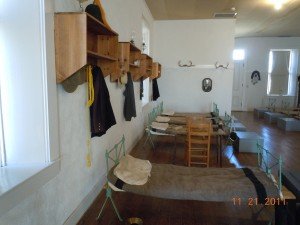
In a large way, the Civil War divided the era of American westward expansion into two distinct periods.
Prior to the war, westward expansion involved, among other things, in 1849 a mad dash to the California gold fields. It also involved large migration into the Texas area as well as into the northern plains. Migration picked up into the southwest after the Mexican American War in 1846.
Prior to the war years there was no transcontinental railroad and the way west was either over the Oregon Trail through the center part of the country or via the stagecoaches that ran through the southwest. There was no transcontinental telegraph system as well during this time. In fact, 1858 marked the year of the start of the Butterfield Overland Stage Line. This line ran from Missouri through Texas, the New Mexico Territory and into California near San Diego. From their it ran north to San Francisco which was growing tremendously from the Sierra Nevada gold mining.
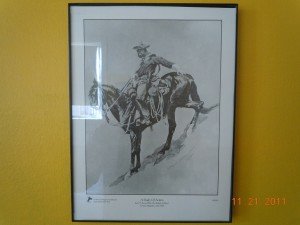
The Buffalo Soldiers
The buffalo soldiers have a very unique history. There are several books written that offer a good overview of how, when and why the buffalo soldier regiments were formed into the regular U.S. Army.
The history of the buffalo soldiers is extensive. The fact is, African-American’s fought bravely alongside the Union army during the Civil War. After the Civil War and by 1867 there were four black regiments established. They were the 9th and 10th Cavalry and the 24th and 25th Infantry. These were the first “Buffalo Soldiers“.
It was evident that using black regiments in southern reconstruction was not a good political idea and even more so when there was a real need of more soldiers on the western frontier. Indians were impeding white settlement everywhere from Texas north to Wyoming and Montana. Red Cloud’s War in Wyoming and Montana was arguably the first large conflict starting in 1868.
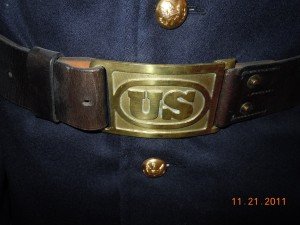
At this very same time plans and construction were getting underway to build the transcontinental railroad. This meant a need for security for both settlers and railroad laborers. Post Civil War, if someplace had to be designated a battle front, it would have been the frontier west.
The buffalo soldiers were sent west out of Fort Leavenworth Kansas and eventually occupied most of the frontier west military outposts at one time or another during the latter 1800’s.
Forts in Texas, New Mexico Territory, Wyoming and Montana..the buffalo soldiers made an appearance. Having African-American troops in a position of authority obviously caused some friction, especially with the Civil War fresh in everyone’s mind.
Research will tell you that the majority of racial abuse came from the area of Texas and New Mexico which of course was home to a large number of ex-Confederate soldiers and sympathizers. Amazingly, some Texas newspapers after the war editorialized negatively concerning the skills of the new buffalo soldiers. The San Antonio Texas newspaper at the time was one of the more aggressive on the subject. The newspaper had a sympathetic readership with most being ex-Confederate military or southern cause supporters. The negative press certainly didn’t help and it had to be endured. If anything, it complicated the work that the soldiers were sent out to accomplish.
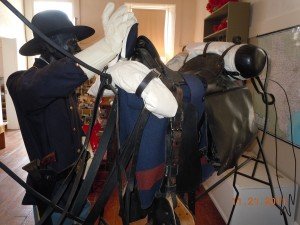
The Mission
If you had to sum up the goals of the buffalo soldiers in the post Civil War West, it would be to protect the trails and in doing so foster westward migration.
There are so many events and incidents in the west involving the buffalo soldiers, the list seems endless.
The story of the buffalo soldiers in Texas and particularly at Fort Stockton in southwest Texas is a good representation of what these brave soldiers were involved in. The buffalo soldiers were an integral part of the post Civil War old west and perhaps more than many realize.
Fort Stockton lies between San Antonio and El Paso and today is directly on Interstate 10. During the 1860’s and 1870’s, the fort was at a crucial junction for the stagecoach and freight lines heading to El Paso and eventually California. Routes that ran past Fort Stockton came out of San Antonio and down from Fort Concho to the north. The Butterfield Overland Mail stage came down through Fort Concho near present day San Angelo Texas on it’s short lived route between Missouri and California. While the Butterfield line disappeared with the start of the Civil War, the area around Fort Stockton still saw a good deal of traffic after the war.
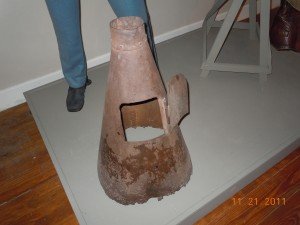
The route down through El Paso heading west still was popular. In 1867, the Ninth and Tenth Cavalry (buffalo soldiers) went down into Texas.
When the buffalo soldiers arrived at Fort Stockton after the war they found that the forts were in disrepair because of their abandonment and their occupation by the Texas Confederates. They required rebuilding. Fort Stockton was rebuilt on 960 acres of leased land. It was quite normal for Uncle Sam to build forts on leased land. Thirty-five buildings were constructed by the buffalo soldiers and the construction was completed in 1868. Fort Stockton was essentially a group of buildings with a large parade ground in the middle. It was not built with a stockade wall as most frontier forts were portrayed by Hollywood. It was obviously tough duty in a very remote area.
Both the Ninth and Tenth Cavalry of buffalo soldiers served some nineteen years at Fort Stockton. The Tenth Cavalry was moved to Fort Stockton in 1875 when the Ninth was transferred to New Mexico. What some may not realize is that it was estimated by the government that during that nineteen year span of occupation, 87% of the soldiers based at Fort Stockton were buffalo soldiers. That gives you a good idea of their historic footprint in west Texas. By 1870, the population around the fort grew to over 400. Irrigation was received from the Pecos River and people, mostly from San Antonio, moved there to start farms.
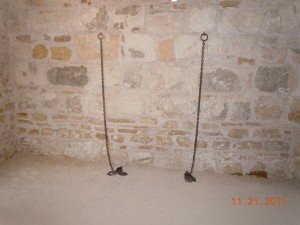
By 1875 there were an estimated 1,100 hundred settlers in the county. Indian threats remained, mostly from the Comanches and Apaches, but during the 1870’s the dangers were dying down.
The last of the Comanches, including their famed leader Quanah Parker, eventually surrendered to the famed Colonel Ranald Mackenzie in Palo Duro Canyon Texas and were sent to the Indian Territory reservations.
Another Trips Into History photo article you’ll enjoy are the Wagon Ruts on the Old Santa Fe Trail. On our Western Trips site see our article on the New Mexico Buffalo Soldiers.
Fort Stockton Today
The military post of Fort Stockton was eventually closed and abandoned in 1886. The Indian threat was gone but the railroads bypassed the town. In fact, a good many western forts were closed at or near the end of the Indian Wars. Today, the fort has been restored and is one of the finest old west military museums depicting the important role of the buffalo soldiers.
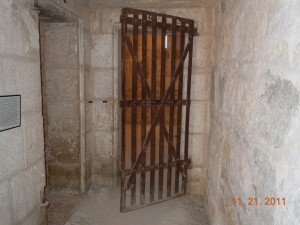
Operated by the Fort Stockton Historical Society, the museum houses many authentic artifacts of the era. The artifacts on display were retrieved from the site over the years and are now on display for all to see and learn from. The fort tour includes the museum building plus a variety of restored structures such as the officers quarters, enlistedmens barracks, the original guardhouse and others.
It’s really a great stop for the entire family while traveling through southwest Texas. Fort Stockton is also near other historic locations such as Fort Davis, another buffalo soldier fort, the world renown McDonald Observatory at Fort Davis and the Big Bend National Park along the Rio Grande. Southwest Texas is a great addition to your family vacation planner.
(Photos from author’s private collection)
